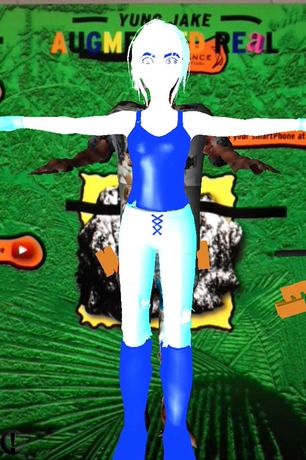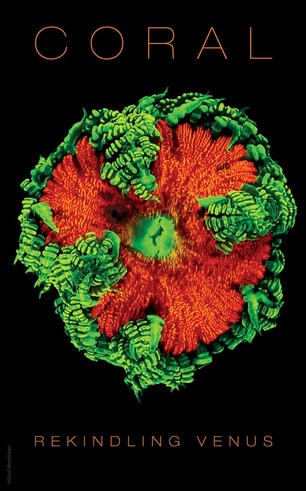New Frontier
A look at the amazing work of the Sundance Film Festival’s venue for experimental cinema and new media

Amid all the hubbub of film releases and elbow-rubbing that will happen at the Sundance Film Festival this week there is a lesser-known venue with enormous potential. New Frontier is a multimedia installation space featuring cutting edge work from some of the world’s most interesting contemporary cinematic artists. Stepping outside the bounds of traditional cinema, New Frontier is a space that highlights experimentation, focusing on expanding cinema culture through film, art and new media technology. Below we’ve highlighted some of the projects that will be on display at New Frontier this year, followed by our interview with Shari Frilot, a senior programmer for the festival and the curator of New Frontier about this unique segment of the festival.
What’s He Building in There?
Looking to a Tom Waits song for inspiration, Ricardo Rivera and the Klip Collective were given the chance to get creative with the New Frontier venue itself. Described as an “interactive, 3-D-projection-mapped parable,” the piece will take over the outdoor lounge, guaranteeing an immersive artistic experience no matter where you end up in the space.


E.m-bed.de/d
This fantastic HTML5 interactive music video from the extremely web-savvy rapper Yung Jake takes great advantage of augmented reality technology. Get Yung Jake’s app, go to his site and then point your phone at the screen for an immediate and awesome interactive experience. A great way to experience an installation that will be on site in Park City from your home, Yung Jake’s video will take over your web browser and give you a glimpse into the future of media.
Interior. Leather Bar.
One of New Frontier’s films this year is a collaboration between directors Travis Mathews and the ever delightful James Franco. The film explores sexuality and creativity—inspired by lost S&M footage from “Cruising”, a controversial 1980s thriller that starred Al Pacino.


Coral: Rekindling Venus
A truly fantastic piece of experimental installation cinema, Coral: Rekindling Venus is artist Lynette Wallworth’s epically beautiful dedication to coral reefs. With stunning visuals, the installation will utilize augmented reality and a full planetarium dome to present a gripping look at life underwater. Beyond the festival the piece will be shown at other locations around the country so more can share in its enchanting picture of the thriving ocean ecosystem.
North of South, West of East
Meredith Danluck’s film takes a more traditional approach to narrative storytelling but adds a twist with presentation. The dark comedy will play simultaneously on four separate channels, encompassing an entire room. The audience, placed in swivel chairs, will have to stay on their toes to follow the tale as the story shifts and evolves in the space, offering a unique viewing experience.
Interview: Shari Frilot
What is New Frontier?
In 2007 what used to be the Frontier section of the festival was re-inaguarated as New Frontier. So, in addition to showing films that kind of expanded and pushed the boundaries of storytelling, we took over a venue and created a space where you could expand the culture even further by engaging with cinematic practices that were happening in new media and the art world. Also with film experimentations that had nothing to do with the continuous format of film presentation.
Read the rest of out interview with Shari Frilot after the jump.
How is curating New Frontier different than doing programming for the main Sundance Festival?
They’re really different. When I first started doing it I didn’t bank on how different it would be. Programming, if I could use a metaphor, is more like sculpting. You’re chasing down these films, you have this big chunk of new films for that year and you are looking for the program. It’s basically the process of elimination and sussing out films that you respond to. In the end you always have more films than you can put into the program so then you’re looking for the most eclectic, the most diverse lineup that you can possibly put together. It’s a community process, it’s a lot of dialog—curating is the opposite.
I go to new media fairs, to festivals, I go to art fairs, biennials, to New York to travel around the galleries to make connections with artists, I cruise the Met. It’s really kind of me thinking about what we do with our film program and putting together a program from those different worlds of cinematic work that will speak to a film festival audience in ways that will expand cinema culture and cinematic storytelling. I need to find work that really speaks the language of cinema so that our audience can go from watching a film in competition into a New Frontier piece and feel it’s very acceptable, even while being challenged by the presentation and maybe it’s content.
How do you think that New Frontier plays into the larger festival and what purpose do you think it serves?
We decided we needed to build a substantial platform for cinematic work happening outside the theater—work that is more physical, work that is actually engaging with the body and following the body in different ways as opposed to you sitting in a dark room and letting it wash over you. With that as the starting point we decided we needed to build a venue for this new direction and make that venue a kind of physical, sensual experience as you are encountering this work that addresses your entire body in different ways. I don’t see this as art at Sundance, I see this as Sundance expanding cinema culture through cinematic practices happening in various areas of the art world, the new media technology world and experimentation in the film world.
How do you think new media and technology will play into and affect the future of this landscape?
It has expanded what kind of stories are within reach, it has had an enormous impact on just the traditional part of cinema. Now as new media technology races ahead of us and expands the options of storytelling, so will our storytelling culture evolve. Maybe one of the most important ways it has influenced so far is the audience becoming part of the narrative, the interactivity and the engagement. Where before we were designing the future of this stuff, at this point I see us as clearly engaging with the environment in different ways. I expect more of an integration between media technology, how it is used to tell stories and our biological bodies and the way that we exercise language.
What do you want people to take away from this experience?
I’d love for audiences to become engaged with the visual landscape that consumes us in a constant, critical and creative way. I hope the show will provoke that in people in ways that maybe recenter the discussion away from how technology makes us stronger and faster and bigger and more superhuman to our humanity and how vulnerable we are and how beautiful that vulnerability is. How we can actually connect with each other inside the landscape as opposed to escape each other to be part of the landscape and the possibility of a global, digital world with those values in place. I know that’s asking a lot from the audience but I’d love for a few people to come out of the show saying, “Wow, there is another way to think about this.”












